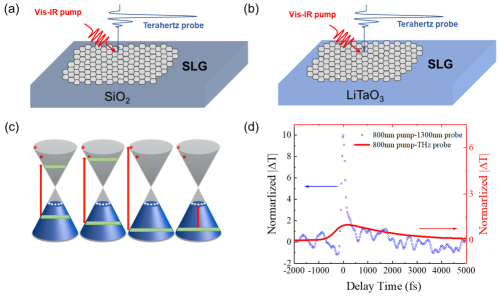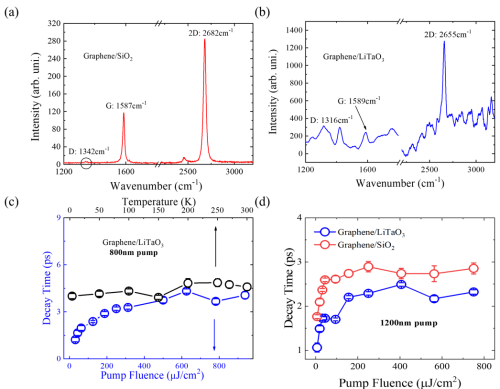
Researchers from the Shanghai Institute of Optics and Fine Mechanics (SIOM) of the Chinese Academy of Sciences (CAS) have discovered that ultrafast disorder-assisted optical-acoustic phonon interaction plays a pivotal role in ultrafast terahertz conductivity relaxation. Related results were published in The Journal of Physical Chemistry C on Jan. 7.
Graphene, which possesses massless high mobility Dirac Fermions for high efficiency photoconversion devices, has driven broad attention in their optoelectronic applications. The ultrafast electron-phonon interaction at low energy regions has driven research interest in recent years.
Graphene, with its massless high-mobility Dirac Fermions for high-efficiency photoconversion devices, has driven broad attention in its optoelectronic applications.
For the sake of clarifying the ultrafast photoconductivity cooling process in Chemical Vapor Deposition (CVD) graphene in several picoseconds, the researchers used the ultrafast mid-infrared pulse pump Terahertz probe technique to investigate the optical phonon-acoustic phonon interaction process. They systematically studied and disentangled the competition between disordered assisted defect scattering and electron-phonon coupling processes during graphene terahertz dynamic cooling.
Experimental results verified that the ultrafast disorder assisted phonon-phonon interaction played a key role in the ultrafast thermal relaxation of the terahertz dynamics.
They demonstrate that the ultrafast photoconductive cooling process of CVD graphene in several picoseconds is mainly due to a disorder-assisted supercollision process that is robust and independent of the pumping wavelength and external temperature.
The above results broaden the research ideas of energy transfer, hot electron extraction and phonon recovery of graphene-based heterojunctions, and contribute to the improvement of graphene-based nano-optoelectronic devices in CVD.
This work was supported by the National Natural Science Foundation of China, the National Key R&D Program of China, and the Interdisciplinary Innovation Team of CAS.

Schematic diagrams of the graphene thin film. Hot-carrier heating and cooling dynamics in graphene. Normalized |△T| as a function of delay time for graphene/SiO2 by infrared and THz probe, respectively. (Image by SIOM)

The extracted values for the cooling process of graphene/SiO2 as a function of pump fluence. Hot-carrier heating and cooling dynamics in graphene/SiO2. (Image by SIOM)

Raman spectroscopy of CVD-grown graphene on the fused SiO2 and LiTaO3 substrates, respectively. The extracted values for the relaxation process of graphene/LiTaO3 as a function of pump fluence and temperature. The pump fluence dependence of the relaxation process of graphene on SiO2 and LiTaO3 substrates, respectively. (Image by SIOM)

86-10-68597521 (day)
86-10-68597289 (night)

52 Sanlihe Rd., Xicheng District,
Beijing, China (100864)

